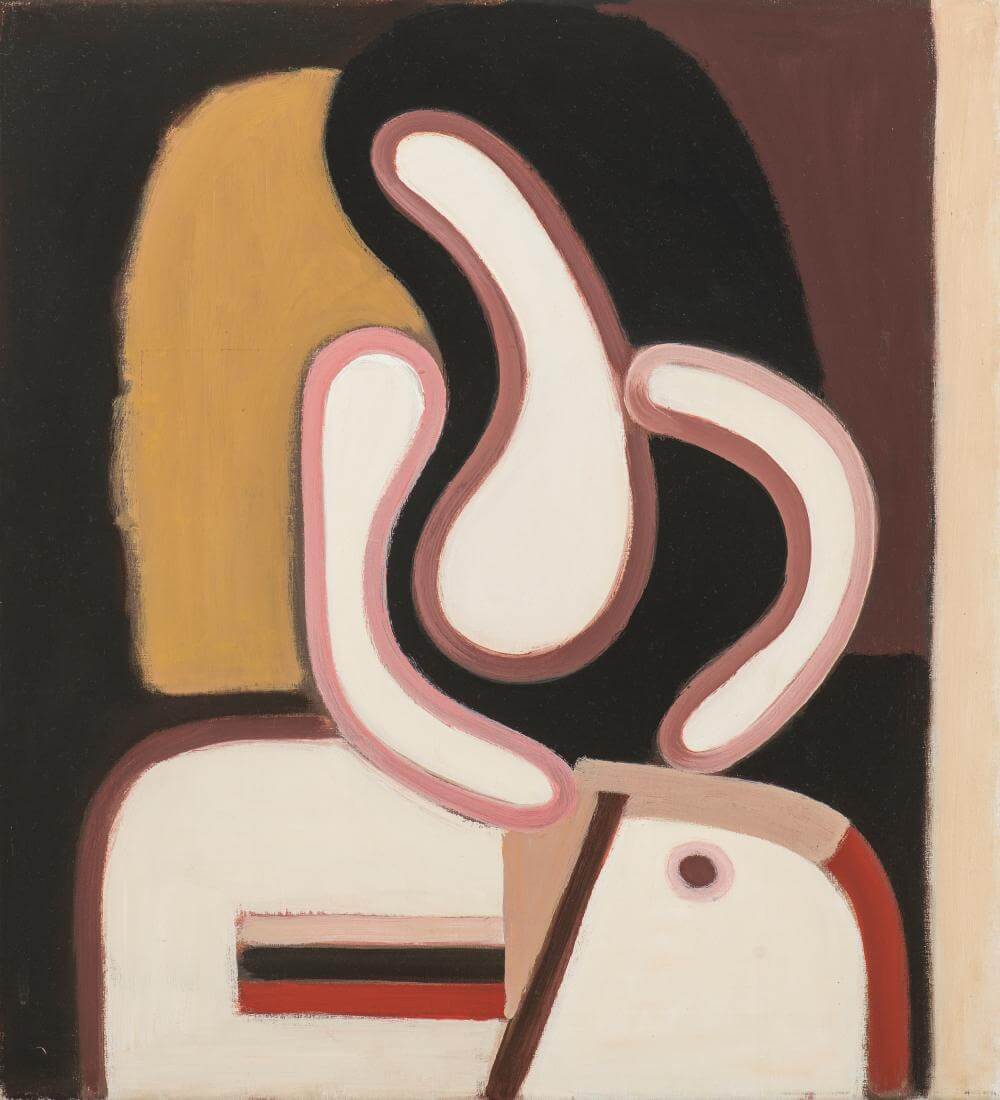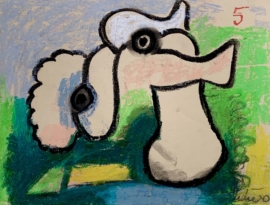Ed Dukkers
Eduard Willem Anton Dukkers, known as Ed or Eddy Dukkers, was a distinctive Dutch modernist born in Zandvoort in 1923. Though he studied briefly at the Instituut voor Kunstnijverheidsonderwijs (now Gerrit Rietveld Academie) in Amsterdam, he was largely self-taught as a painter and lithographer. His early breakthrough came in 1946 when Willem Sandberg selected him for the influential “Tien jonge schilders” exhibition at the Stedelijk Museum, alongside artists such as Karel Appel and Corneille. In 1952, he received the Tetar van Elven scholarship, enabling travel—particularly to Greece—that left a lasting mark on his artistic development.
Dukkers’ work evolved from expressionism into a personal form of literary surrealism, focusing on themes like death, eroticism, and ritual, often centred on the human figure. Over time, his visual language shifted toward abstraction, particularly after the mid-1980s, when he embraced geometric forms, bold colour, and stylised compositions. His paintings frequently depicted nudes, interiors, landscapes, and mythic or surreal objects, often described as “gestileerde chaos” (stylised chaos), combining emotional depth with formal experimentation.
Throughout his career, Dukkers was active in artistic circles, notably with the collective De Keerkring and societies like Arti et Amicitiae. He taught at the Rijksakademie until 1972 and received several honours, including the Jeanne Bieruma Oosting Prize (1980) and the Arti medal (1982). Though he exhibited at major institutions such as the Haags Gemeentemuseum and Museum Fodor, his reputation remained strongest among fellow artists and dedicated collectors. In 2019, Stichting Ed Dukkers organised a retrospective, Ed Dukkers – Restvormen, at Museum Belvédère in Friesland, renewing interest in his rich and complex legacy.


 Ed Dukkers
Ed Dukkers


 Ralph Steadman
Ralph Steadman Alexander
Alexander